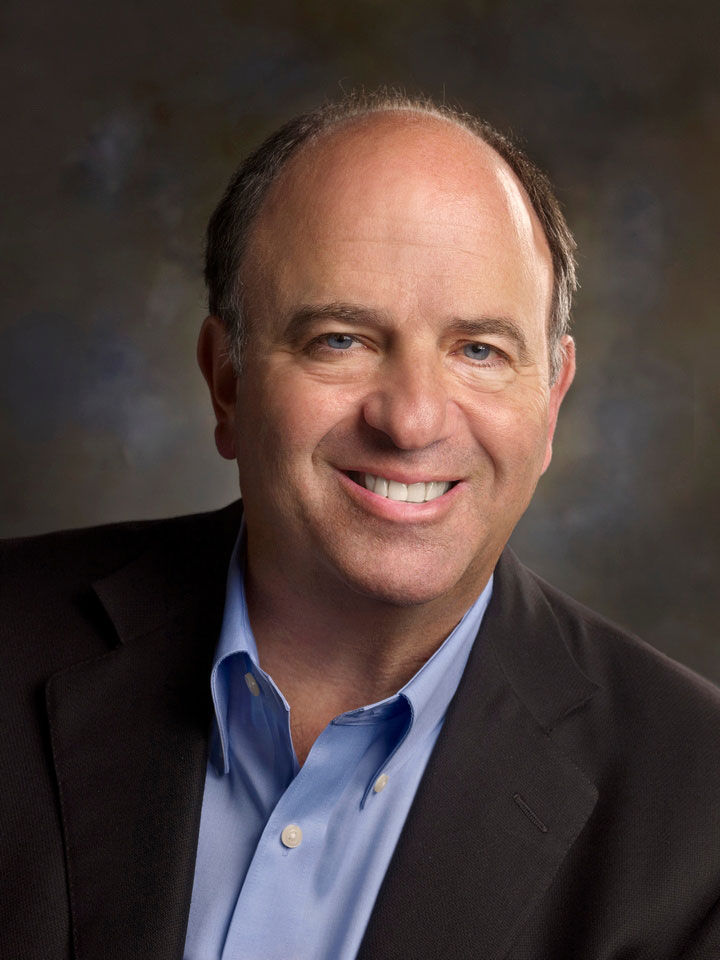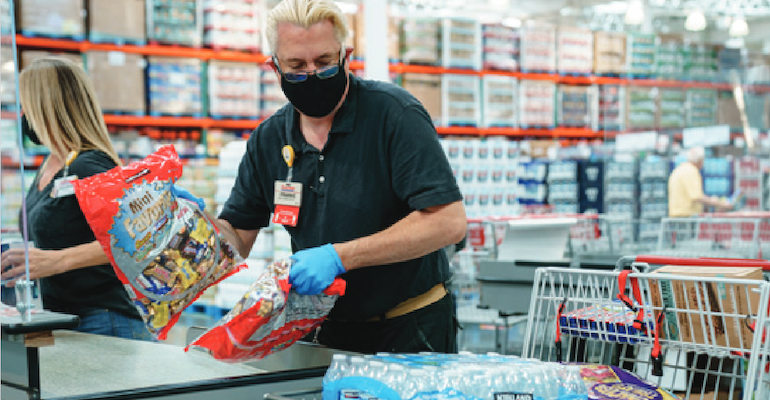Costco Wholesale has followed up one strong fiscal year with another.
The Issaquah, Wash.-based warehouse club chain posted double-digit net and comparable sales growth for its fiscal 2022 fourth quarter and full year, while topping Wall Street’s consensus earnings-per-share forecast for both periods.
In the 16-week quarter ended Aug. 28, net sales came in at $70.76 billion, up 17.5% from $61.44 billion a year earlier, Costco reported yesterday after the market close. The increase marked a 17.5% uptick in the fiscal 2021 quarter.
Total comparable sales in the quarter climbed 13.7% from a year ago (10.4% adjusted, excluding fuel and FX), reflecting gains of 15.8% in the United States (9.6% adjusted), 13.4% in Canada (13.7% adjusted) and 2.9% internationally (11.3% adjusted). A year ago, Costco reported that comp sales increased 15.5% (9.4% adjusted), including an increase of 14.9% in the U.S. (10.3% adjusted).
“In terms of the Q4 comp-sales metrics, traffic or shopping frequency increased 7.2% worldwide and was up 5.2% in the U.S. Our average transaction or ticket was up 6% worldwide and 10.0% in the U.S. during the fourth quarter,” Costco Chief Financial Officer Richard Galanti told analysts in a conference call late Thursday.
 “Many of you have asked about private label with the recent inflationary environment and what’s happening, are people trading down? And of course, our first response is they’re not trading down. They’re trading up or certainly trading the same.” — Richard Galanti, Costco chief financial officer (Photo courtesy of Costco)
“Many of you have asked about private label with the recent inflationary environment and what’s happening, are people trading down? And of course, our first response is they’re not trading down. They’re trading up or certainly trading the same.” — Richard Galanti, Costco chief financial officer (Photo courtesy of Costco)
Gasoline price inflation lifted sales by about 5.5% in the fourth quarter, while FX negatively impacted sales by slightly over 2%, Galanti reported.
“The best-performing core categories in the quarter were candy, frozen, kiosks, tires, lawn and garden, jewelry, toys, bakery and deli,” he said. “In terms of ancillary businesses, the best performers were gas and food courts. And in other businesses, travel and business centers performed best relative to the prior fiscal fourth quarter results.”
Commenting on inflation, Galanti cited “minor improvement in a few areas” despite ongoing pressures higher commodity prices, wages, transportation costs and supply chain disruptions.
“They’re still present, but we are seeing just a little light at the end of the tunnel,” he explained. “And if you recall in the third quarter, we indicated that price inflation overall was about 7% plus for us. For the fourth quarter, and talking with our merchants, the estimated price inflation overall was about 8%, a little higher on the food and sundries side, a little lower on fresh foods, and both higher and lower on the nonfood side.”
Galanti threw cold water on the notion of Costco members trading down to store brands amid high prices.
“Many of you have asked about private label with the recent inflationary environment and what’s happening, are people trading down? And of course, our first response is they’re not trading down. They’re trading up or certainly trading the same,” he said. “In terms of Kirkland Signature merchandise penetration, and excluding gas and other businesses that carry the Kirkland name, Kirkland Signature merchandise is up just under 1% in terms of penetration compared to a year ago. Our KS merchandise penetration is about 28% for the year. This is similar to historical trends, where it’s increasing slowly and steadily over time. So no big dramatic change from the past there.”
Fourth-quarter e-commerce sales gained 7.1% (8.4% excluding FX) from a year earlier. “Stronger departments in terms of year-over-year percentage increases were tires, lawn, patio and garden, prescription pharmacy and health and beauty aids,” said Galanti. “The largest e-com merchandise department in dollars, what we call majors, which includes everything from computers to appliances to TVs to audio, etc., was up in the high single digits. And Costco Grocery, including our third-party delivery, two-day dry, fresh and frozen, continues to grow. They were up 20% in the quarter.”

In food, top-performing categories for Costco in the fourth quarter included candy, frozen, bakery and deli.
Membership fee income advanced 7.5% year over year (10.5% excluding the impact of foreign exchange rates) to $1.33 billion. Total paid member households rose 6.5% to 65.8 million, and the total cardholder count grew 6.5% as well to 118.9 million.
“In terms of membership fees and a possible increase, there are no specific plans regarding a fee increase at this time,” according to Galanti. “We’re pleased with our growth in both top-line sales and membership households over the last several quarters, and member loyalty is reflected in increasing member renewal rates.”
For the 2022 fiscal year, net sales came in at $222.73 billion, up 16% from $192.05 billion in fiscal 2021, when the company rang of a 17.7% gain. Full-year comp sales for the 52 weeks rose 14.4% overall (10.6% adjusted, excluding fuel and FX), reflecting upticks of 15.8% in the U.S. (10.4% adjusted), 15.2% in Canada (12.1% adjusted) and 6.6% internationally (13.4% adjusted). In fiscal 2021, Costco recorded comp sales growth of 16% overall (13.4% adjusted), including a gain of 14.8% in the U.S. (13.6% adjusted).
Fiscal 2022 e-commerce sales surged by 10.1% (10.4% excluding FX) atop of growth of 44.4% (42.6% excluding FX) on a comparable basis in fiscal 2021.
At the bottom line, Costco’s 2022 fourth-quarter net income totaled $1.87 billion, or $4.20 per diluted share, compared with $1.67 billion, or $3.76 per diluted share, a year ago. Analysts, on average, had projected Q4 adjusted EPS of $4.16, with estimates ranging from a low of $3.69 to a high of $3.50, according to Refinitiv.
For the full 2022 fiscal year, net earnings were $5.84 billion, or $13.14 per diluted share, versus $5.01 billion, or $11.27 per diluted share, in 2021. Analysts’ consensus estimate was for adjusted EPS of $13.13, with projections running from a low of $12.73 to a high of $13.43, according to Refinitiv.
Costco stands well-positioned for additional market-share gains going forward, according to Jefferies analyst Corey Tarlowe.
“Costco is a defensive name by nature due to its membership model that generates predictable sales and profits, an attractive value-orientation, a higher-income customer, and a relatively significant penetration of consumables as a percentage of sales,” Tarlowe wrote in a research note released Friday. “Additionally, the company continues to open new clubs in the U.S. and has a meaningful runway for ongoing international expansion. Further, we believe Costco is likely to raise its membership fee in the not-too-distant future, providing upside to estimates ahead.”
During fiscal 2022, Costco said it opened 26 warehouse clubs, including three relocations, for a net gain of 23 for year. That includes nine in Q4, with five of those in the U.S., two in Canada and one apiece in Korea and Japan.
“In fiscal ’23, we expect to open 29 new warehouses, including four relos, for a net of 25 new warehouses,” Galanti said in the analyst call. “These 25 planned net new openings are made up of 15 in the U.S. and 10 in ohter international, including our first locations in New Zealand and Sweden and our third and fourth locations in China.”
Currently, Costco operates 838 warehouse clubs overall, compared with 817 a year ago. By market, the retailer operates 578 clubs in the U.S. and Puerto Rico, 107 in Canada, 40 in Mexico, 31 in Japan, 29 in the United Kingdom, 17 in Korea, 14 in Taiwan, 13 in Australia, four in Spain, two each in France and China, and one in Iceland. Costco also runs e-commerce sites in the U.S., Canada, the U.K., Mexico, Korea, Taiwan, Japan and Australia.


